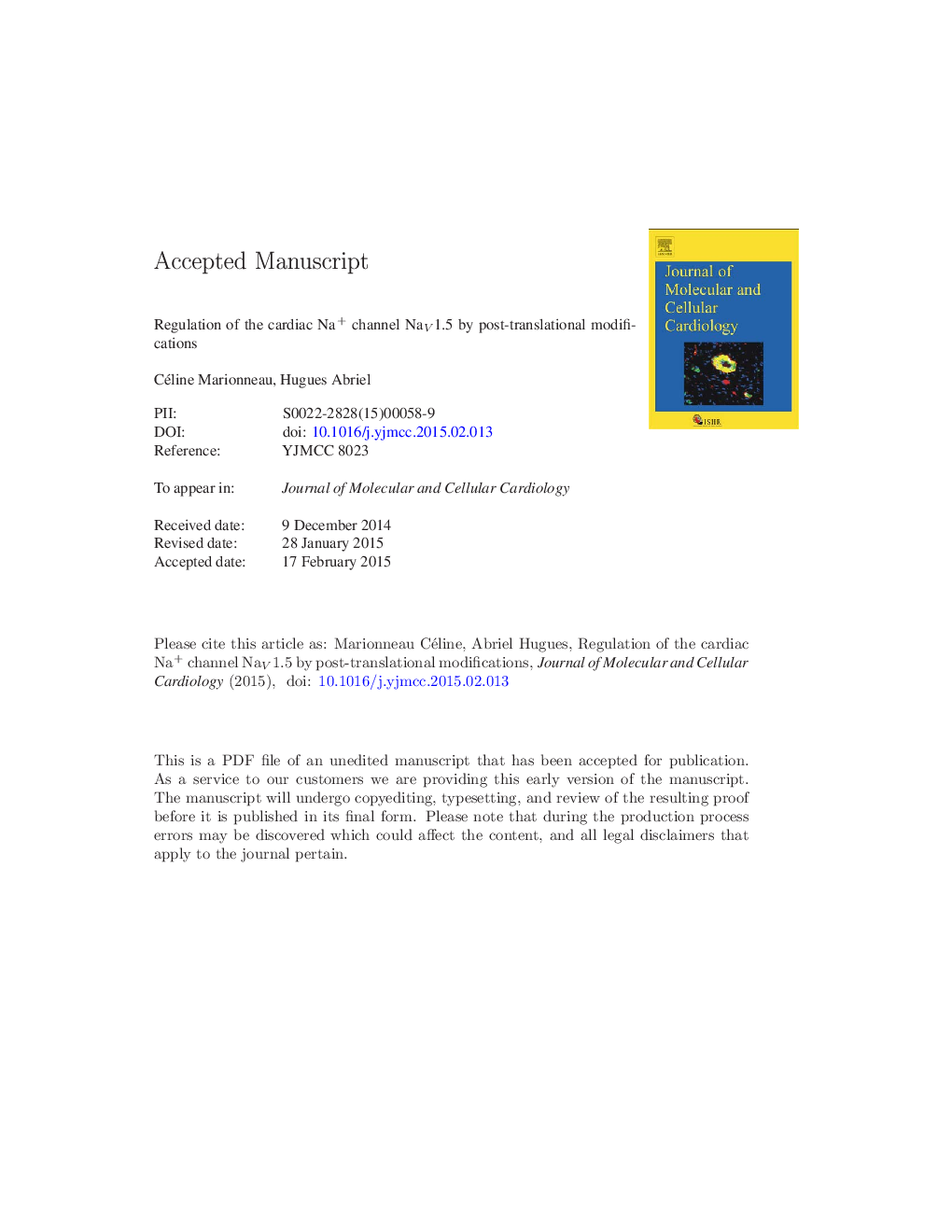| کد مقاله | کد نشریه | سال انتشار | مقاله انگلیسی | نسخه تمام متن |
|---|---|---|---|---|
| 8474322 | 1550423 | 2015 | 40 صفحه PDF | دانلود رایگان |
عنوان انگلیسی مقاله ISI
Regulation of the cardiac Na+ channel NaV1.5 by post-translational modifications
دانلود مقاله + سفارش ترجمه
دانلود مقاله ISI انگلیسی
رایگان برای ایرانیان
کلمات کلیدی
AMPKINaLLQTSPKCpKaCaMKIIBRSPTMPI3KINa - INAPKB/AKT - PKB / AKTSGK - SSIArrhythmias - آریتمی هاacetylated - آستیل شدهpost-translational modification - اصلاح post-translationalpost-translational modifications - تغییرات پس از ترجمه، پیرایش پساترجمهRedox - ردوکس(اکسایش و کاهش)Long QT syndrome - سندرم QT طولانیBrugada syndrome - سندرم بروگاداMass spectrometry - طیف سنجی جرمیphosphothreonine - فسفاترونینPhosphatidylinositol 3-kinase - فسفاتیدیلینواستیل 3-کینازphosphotyrosine - فسفاتیزینphosphoserine - فسفسئینMethylated - متیل شدهprotein kinase B - پروتئین کیناز BProtein kinase C - پروتئین کیناز سیadenosine monophosphate-activated protein kinase - پروتئین کیناز فعال شده با آدنوزین مونوفسفاتcAMP-dependent protein kinase - پروتئین کیناز وابسته به cAMP
موضوعات مرتبط
علوم زیستی و بیوفناوری
بیوشیمی، ژنتیک و زیست شناسی مولکولی
بیولوژی سلول
پیش نمایش صفحه اول مقاله

چکیده انگلیسی
The cardiac voltage-gated Na+ channel, NaV1.5, is responsible for the upstroke of the action potential in cardiomyocytes and for efficient propagation of the electrical impulse in the myocardium. Even subtle alterations of NaV1.5 function, as caused by mutations in its gene SCN5A, may lead to many different arrhythmic phenotypes in carrier patients. In addition, acquired malfunctions of NaV1.5 that are secondary to cardiac disorders such as heart failure and cardiomyopathies, may also play significant roles in arrhythmogenesis. While it is clear that the regulation of NaV1.5 protein expression and function tightly depends on genetic mechanisms, recent studies have demonstrated that NaV1.5 is the target of various post-translational modifications that are pivotal not only in physiological conditions, but also in disease. In this review, we examine the recent literature demonstrating glycosylation, phosphorylation by Protein Kinases A and C, Ca2Â +/Calmodulin-dependent protein Kinase II, Phosphatidylinositol 3-Kinase, Serum- and Glucocorticoid-inducible Kinases, Fyn and Adenosine Monophosphate-activated Protein Kinase, methylation, acetylation, redox modifications, and ubiquitylation of NaV1.5. Modern and sensitive mass spectrometry approaches, applied directly to channel proteins that were purified from native cardiac tissues, have enabled the determination of the precise location of post-translational modification sites, thus providing essential information for understanding the mechanistic details of these regulations. The current challenge is first, to understand the roles of these modifications on the expression and the function of NaV1.5, and second, to further identify other chemical modifications. It is postulated that the diversity of phenotypes observed with NaV1.5-dependent disorders may partially arise from the complex post-translational modifications of channel protein components.
ناشر
Database: Elsevier - ScienceDirect (ساینس دایرکت)
Journal: Journal of Molecular and Cellular Cardiology - Volume 82, May 2015, Pages 36-47
Journal: Journal of Molecular and Cellular Cardiology - Volume 82, May 2015, Pages 36-47
نویسندگان
Céline Marionneau, Hugues Abriel,